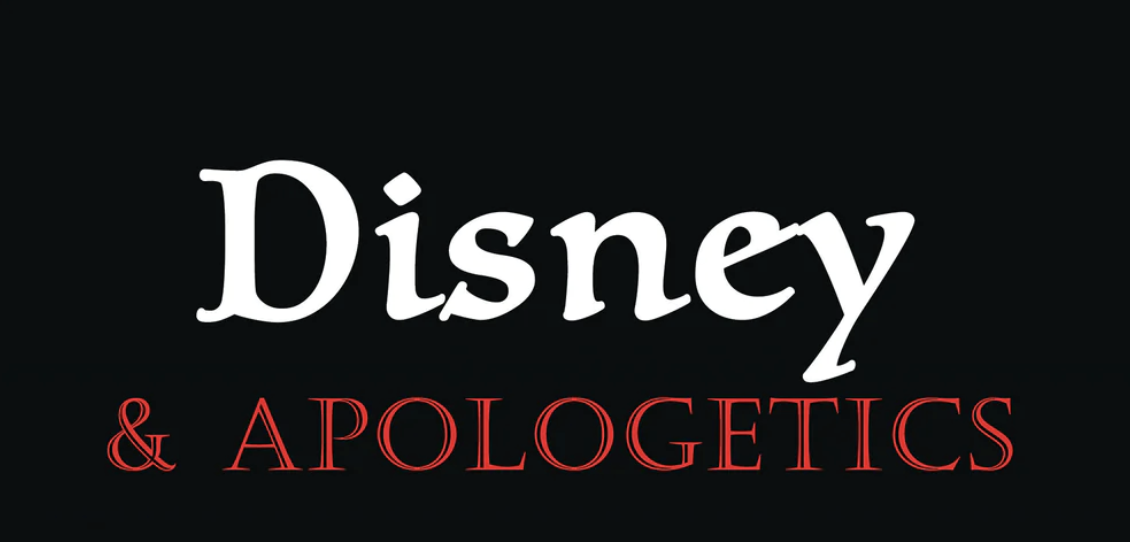Jeremy Scarbrough has edited a fascinating new book (actually two books in one) called Disney & Apologetics. As you will see below, it is aimed to help Christians engage culture through biblical and strategic thinking about Disney films. It is a fresh and creative book. I hope you will consider getting a copy, but first check out our brief interview.
SEAN MCDOWELL: What prompted you to write a book on the intersection of Disney and apologetics?
JEREMY SCARBROUGH: The initial idea grew out of my classroom. I teach philosophy and students often think of philosophy as something removed and inaccessible So, I use pop culture to show that they’ve been doing philosophy all along! We consume media and that media is saturated with perspectives on the way the world is. In my ethics class, I began to notice how well Disney served as a tool for exploring tensions between egoism and virtue ethics.
This prompted me to ponder more closely the theological significance of these narratives, and how our long-and widely-celebrated stories might both reveal and attempt to speak to some of our deepest and shared convictions about the way the world is. (And if the Christian story of reality is true, then, on some level, it should naturally enfold some aspect of the other stories we tell).
I began to notice a grand narrative across Disney films which depicts an objective goodness that effectively deals with some evil or curse. I further observed Disney’s recurrent interest in a kingdom-ever-after and its connection to virtue. Disney’s use of music also provoked new ideas concerning music’s connection to morality. All of this came together and inspired the project.
MCDOWELL: Why has Disney had such a powerful influence on our culture, and what can Christians learn from this?
SCARBROUGH: Disney’s overall power and influence is complex. Let’s just focus on “Disney stories.” I think the power of Disney’s storytelling involves several things: First, Walt was a pioneer in combining the power of music, the innovation of synchronized sound, and new developments in animation to enhance the power of already-celebrated stories. The initial power, then, was imaginative and aesthetic.
Second, Walt’s storytelling through animated feature films pressed continually into aspects of the human condition and our shared moral convictions. There’s something to this as it resonates with viewers around the world, young and old.
The third, most powerful, aspect of Walt’s influence is the use of nonsectarian narratives. The very thing that some Christians would attack Disney for—e.g., “replacing God with magic”—is actually, precisely, what makes Disney stories so widely accessible and therefore able to serve as an effective doorway to dialogue. See chapters two and five for more on this. Christians can learn to see the value of using the arts as a platform for dialogue concerning moral conviction and the human condition. Additionally, they need not default to assault when a popular story is not Christian, for it may yet be enfolded by the Christian story!
MCDOWELL: Practically speaking, how do you envision people using the material in the book in their apologetic or evangelistic engagements?
SCARBROUGH: I do not think of this work necessarily as the tool one will take into a conversation, but as a whetstone for sharpening one’s understanding and insights. If someone loves Disney stories and they are speaking with another who is familiar with them, then sure; I think the material will be useful. But my goal is to equip readers with a sharper mind for approaching pop culture as an opportunity for apologetic dialogue.
I also want to challenge them to learn to balance the critical with the charitable. My ultimate aim, however, is to offer a model. Some people are drawn to apologetics but have no idea what to do with it. And some who love pop culture love the idea of cultural apologetics… yet they have trouble envisioning how to do cultural apologetics.
I found myself in this position once, and models are helpful for getting started and finding one’s niche. So my aim was both do cultural apologetics and to demonstrate a few ways to go about it. This is why I took it as a great compliment when The Gospel Coalition’s Brett McCracken called Disney & Apologetics “a great example of cultural apologetics done well.”
MCDOWELL: Many people see Disney as antithetical to Christianity. Yet you see it differently. Can you explain?
SCARBROUGH: “Disney” is a 100-year-old enterprise, with a rich history, complex impact, and now a number of perspectives in the mix. When we speak of what “Disney” is or is not, we should clarify what we mean. Do we mean Walt, his vision, or the vision of others now privileged to live off his legacy? I have in mind both Walt’s influential legacy, which established the corporation as an authoritative storyteller, and those long-celebrated stories which demonstrated the power of Walt's approach to storytelling.
That said, it’s okay, when encountering ideas that do not perfectly reflect one's worldview, to take stories on their own terms and consider whether they contain any wisdom or opportunities for conversations which point back to Christianity. Sometimes it’s where we disagree that we might find a story’s most nourishing food for dialogue.
A number of Disney stories have been widely received precisely because they communicate something about the human condition that resonates with a large number of viewers. It is not necessarily anti-Christian for non-Christians to tell non-Christian stories, nor for nonsectarian storytellers to share nonsectarian tales. It is an opportunity, however, for Christians to follow Paul’s lead in Acts 17:23.
MCDOWELL: The second volume in the book includes contributions from others. Can you share one unique contribution, that you find helpful or powerful, that one of the writers made?
SCARBROUGH: Holly Ordway makes a cool connection between imagination and incarnation. And there are thought-provoking points offered throughout the book.
However, given my background and particular interest in the connection between aesthetics and ethics, I really appreciate Timothy Bartel’s observation, albeit brief, in his chapter on “The Lost Princess,” a theological anthropology of Tangled. After exploring how Rapunzel’s story reflects many aspects of our own story and resonates profoundly with the Christian story of reality, he closes with consideration of the “witness of art.” This film, he says, is about how an artist comes to understand her true identity through art. Sometimes, truth is communicated through art, and that truth tugs at questions of identity, our understanding of the world, and even our desire for transformation. This was a moment where, as editor, as I read this passage, I actually exclaimed aloud, “That’s it! You’ve got it!” because Bartel was articulating effectively, through analysis of a story, a point that I have been trying to make for some time in the language of abstract ideas. And it just so perfectly portrays the overall sentiment of my approach to cultural apologetics in general and this work in particular.

